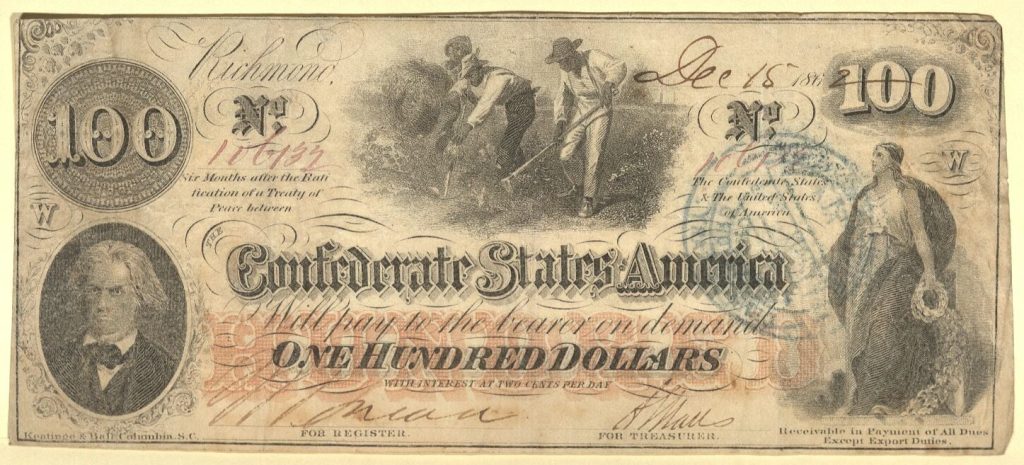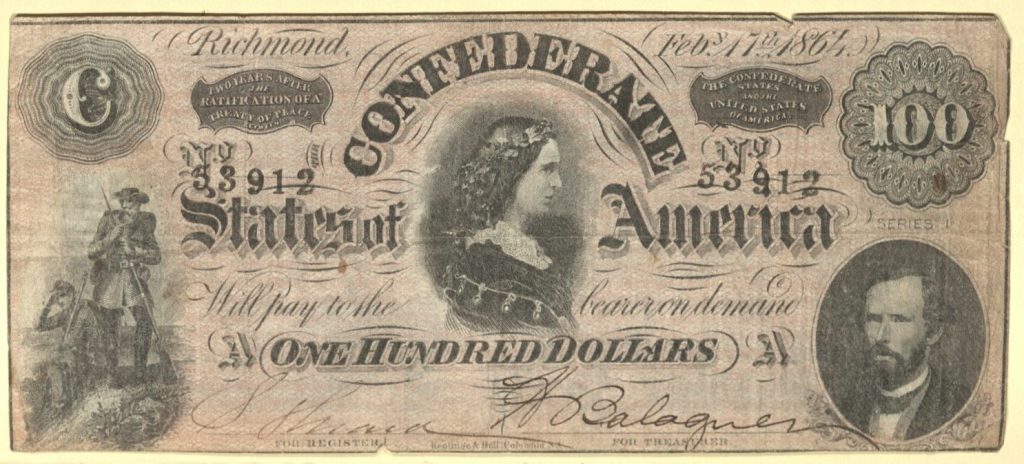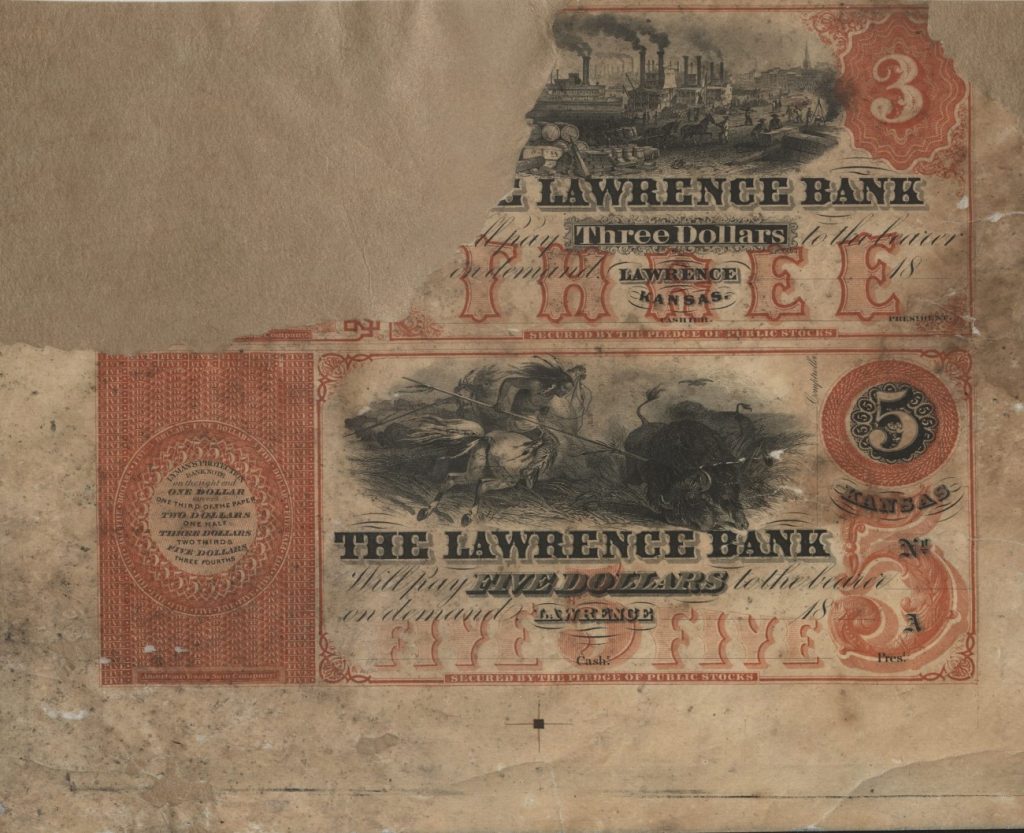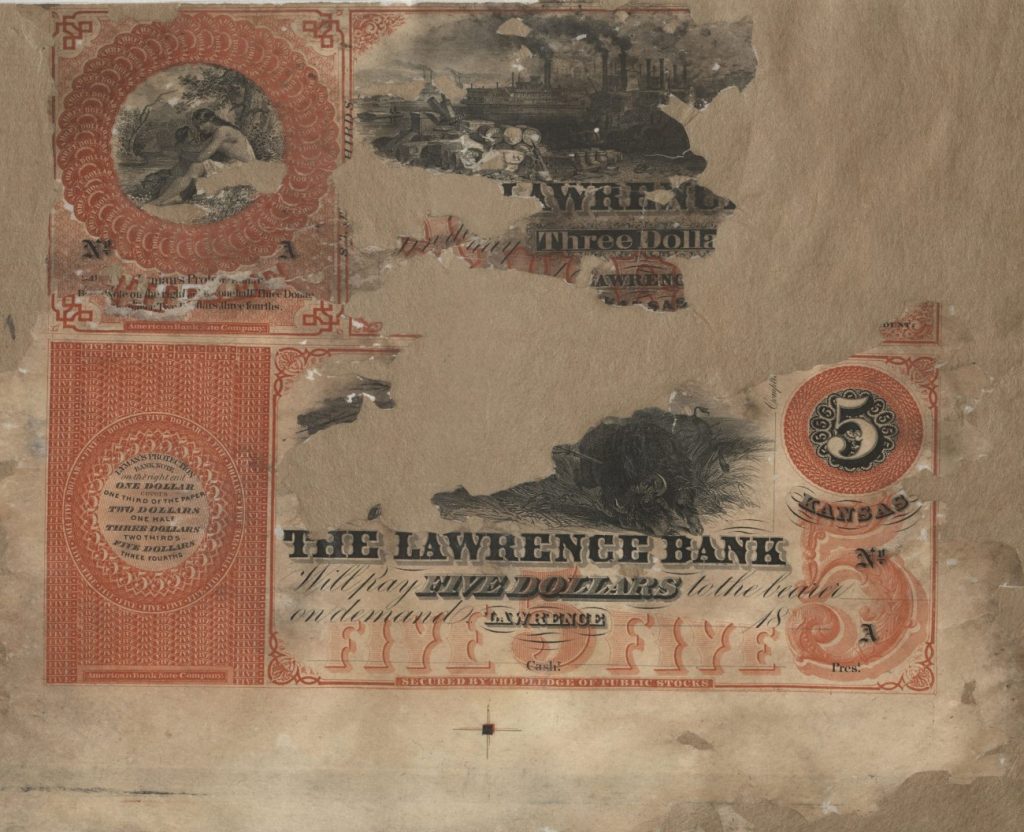That’s Distinctive!: Confederate Banknotes
June 28th, 2024Check the blog each Friday for a new “That’s Distinctive!” post. I created this series to provide a lighthearted glimpse into the diverse and unique items at Spencer. “That’s Distinctive!” is meant to show that the library has something for everyone regardless of interest. If you have suggested topics for a future item feature or questions about the collections, you can leave a comment at the bottom of this page. All collections, including those highlighted on the blog, are available for members of the public to explore in the Reading Room during regular hours.
This week on That’s Distinctive! I am sharing some items out of the Herd Family Papers. I have used the Herd Family Papers a couple of times in the past to highlight baseball trading cards and Thanksgiving postcards, and I plan to continue to use them more in the future. It is one of those collections that just keeps on giving. Consisting of over 37 boxes and 47 volumes, the collection contains plenty to be explored. The collection spans the dates of 1817-2013 and documents many events from throughout the family’s lives. The finding aid notes that “materials were processed in the order they were found, which means that bound bundles of letters, often from the same source, can be found in sequence, while other correspondence of the same time period may turn up several boxes away.” Much like exploring an old house, the collection has many nooks and crannies hiding little gems between the hustle and bustle of everyday life.
The items shown today are two Confederate bank notes from the 1860s. One is from 1862, and the other is from 1864. The Confederate States of America was established when seven Southern states seceded from the Union in 1860 following the election of President Abraham Lincoln. Four more states followed after the April 1861 attack on Fort Sumter, which prompted the Civil War. Feeling that their slavery-based economy was threatened, the southern states adopted their own constitution establishing a government of “sovereign and independent states.” Though the Confederacy struggled with legitimacy, it existed from 1861 to 1865.
The Confederate government first began printing banknotes in March 1861. The first notes were printed in New York and smuggled across Union lines. Subsequent notes were then printed in the South. The first circulation of banknotes had a total sum of $1 million. With limited engravers and printers on hand, early designs were often unrelated to their purpose. Some designs were abstract depictions of mythical gods and goddesses while others included naval ships and historical figures. Of the 72 designs put out, five included depictions of enslaved people; one of them can be seen on the note shared today from 1862. Confederate notes were not backed by hard assets. According to Wikipedia, the banknotes were backed by the “promise to pay the bearer after the war, on the prospect of Southern victory and independence.” However, as the war progressed and the road to victory diminished, so did the value of the currency. Once the Confederacy accepted defeat, the money had no value and individuals and banks alike were left with nothing. Today, Confederate banknotes (also known as “greybacks”) are prized collector items.
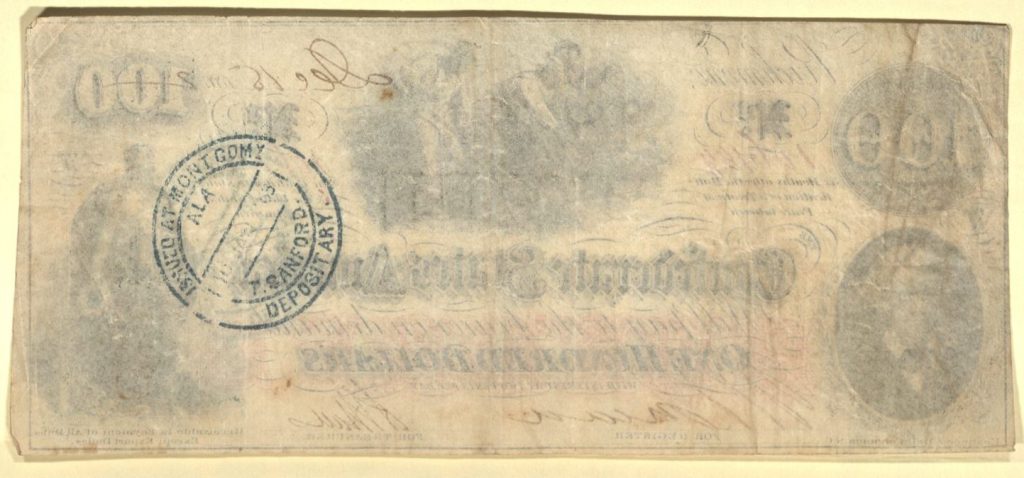
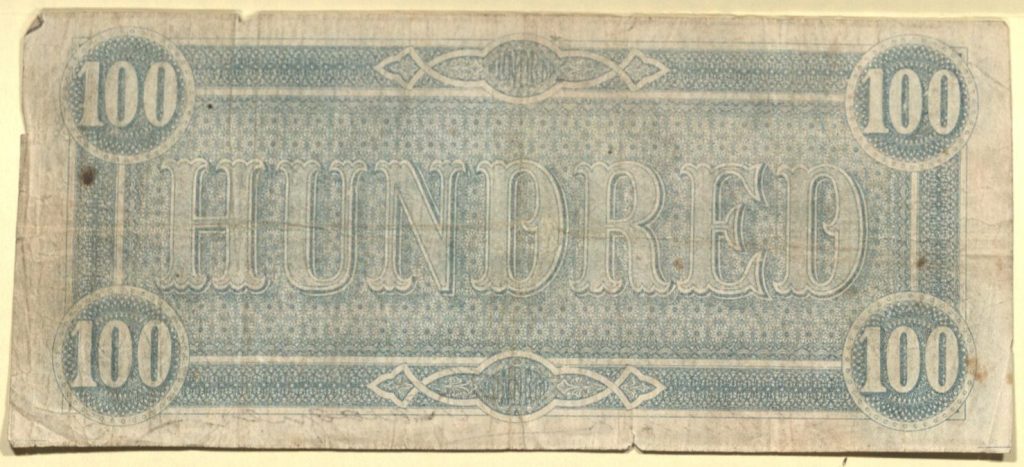
Tiffany McIntosh
Public Services

